Check out these amazing hotel deals!
- Save up to 30% on your hotel in Hawaii!
- Last-minute holiday hotel deals
- Top hotel deals for a new year trip
- Visiting Paris? Find the Best Deals & Reviews at TripAdvisor.
- Save 30% on hotels in Ocean City, Maryland...a TripAdvisor Top 10 Summer Destination!
- Save up to 30% on your hotel on your Winter Vacation!
- Find top-rated hotels at the lowest prices on TripAdvisor. Check rates now!
- Save up to 30% on hotels for a romantic getaway!!
Italy is a complete nation, known throughout the world for its many facets, its faults but most of all for its many qualities and immense nature beauties.
Dream landscapes, ranging from the mountains to the sea, passing through the rolling hills of central Italy, exceptional hospitality, and unique enogastronomic itineraries. And, today, we talk about the last aspect, more precisely about the wine heritage.
Both, white and red grapes are grown in almost all Italian regions for the production of excellent wines. The wineries and farms are no longer simple farms but more and more often are transformed into real works of architectural art.
To show you how the wine magic works, we’ve compiled the best of the best winners, bringing you the 21 most beautiful wineries in Italy! They are a must-visit for everyone interested in excellent wine and are recommended by experts for the goodness and particularity of the wines produced there. Prepare your glasses and let’s start the tour!
21. Wine Resort Donna Franca, Sicily
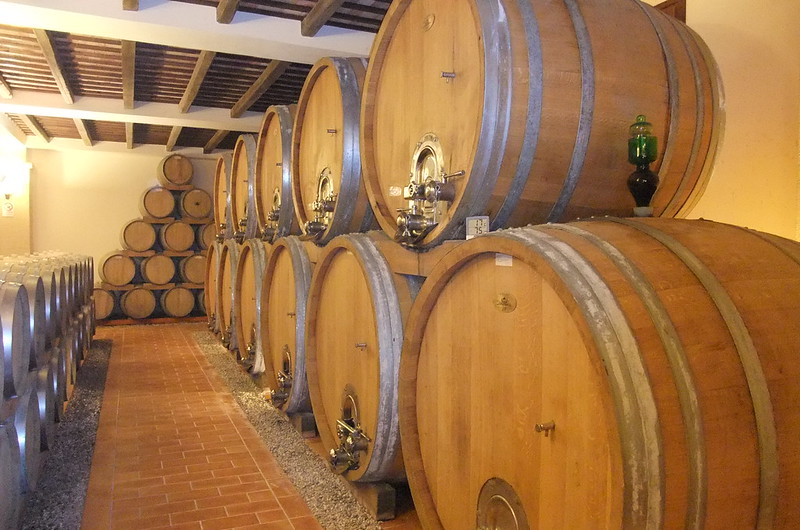
The Baglio Donna Franca is immersed in the vineyards of the Marsala countryside, at 150 masl which allows you to enjoy an enchanting view of the Egadi islands, the Saline della Laguna, and Erice.
In 2000, Paola and Giacomo Ansaldi bought what had become the ruins of the ancient baglio that belonged to the Florio family and, thanks to a careful renovation, they brought it back to light. Today, it is a wine resort with 15 elegantly furnished rooms, a restaurant serving traditional Sicilian dishes, and a cellar, the productive heart of the company which with its 11 hectares of vineyards produces 5 organic wines. In its underground cellar, you can visit a wine museum where the largest collection of Perpetual wine in Italy is located. It is a unique product that can ideally age forever, a symbol of the ancient peasant tradition of Marsala. A wine that is not only the ancestor of Marsala but the heart and history of an entire territory, its traditions, and families.
20. Villa Vignamaggio, Tuscany
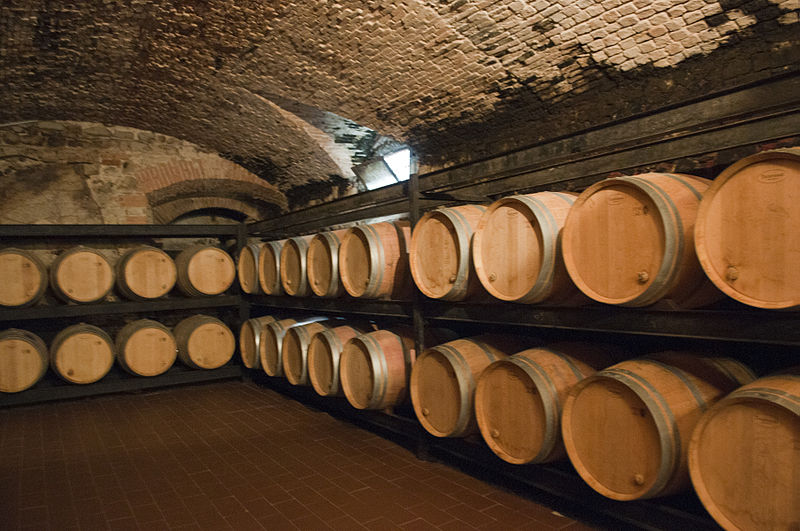
The spirit of the Mona Lisa fills the air in Vignamaggio, an extraordinary 14th-century villa on the outskirts of Greve in Chianti built by the Gherardini family in the late Middle Ages. One of their descendants, Lisa Gherardini, daughter of the owner Vignamaggio Anton Maria and wife of Francesco del Giocondo, is believed to be the possible model who posed for Leonardo’s famous and enigmatic painting. Today, the vineyards cover 62 hectares of the total 250. Part of the land is cultivated with Sangiovese, a traditional variety of Chianti, and some parts with Cabernet Franc. Vignamaggio mainly produces Chianti Classico, Chianti Classico Riserva and Vinsanto, with one of the Riserva aptly named Castello di Monna Lisa.
Visitors can take a tour of the winery and enjoy the great Italian gardens of Vignamaggio, but not before having tasted some of the estate’s wines. Wine products, as well as locally produced olive oil and grappa, are available for sale in the shop.
19. Cantina dell’Ulmo Planeta, Sicily
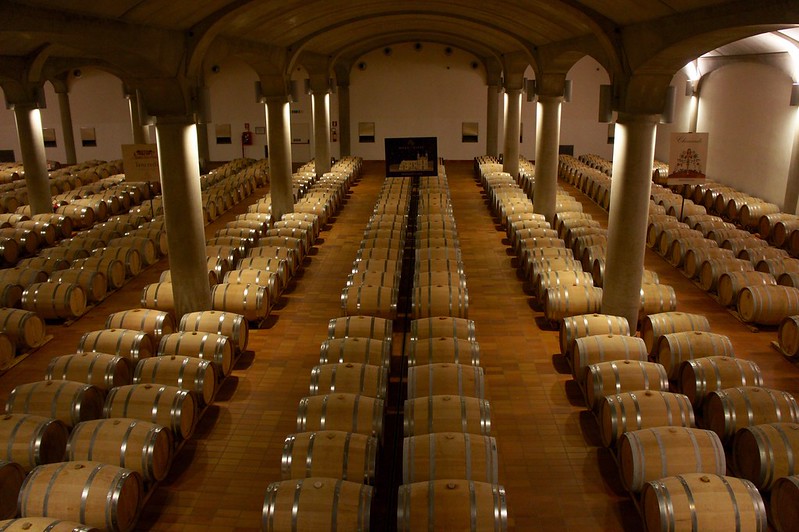
The Elm Planet WInery represents one of the greatest entrepreneurial and viticultural successes of Sicily. Thanks to this company, the island was able to rediscover the dormant enthusiasm for the native Nero d’Avola, the development of Chardonnay crops, and the creation of sophisticated fruity blends of local and international varieties. But Planeta’s story begins relatively small, in a 17th-century farmhouse located near the ruins of an ancient Arab castle on the shores of Lake Arancio, near the town of Sambuca di Sicilia.
Three young people of the family, Alessio, Francesca, and Santi, launched their winemaking business in 1995. Their business was, both, innovative and deeply immersed in the local culture. The Cantina di Ulmo, surrounded by 95 hectares of vineyards, was their first winery, which was followed by the construction of another four, but Ulmo remains the most beautiful to visit. It is a beautiful building in vulgar Sicilian style, entirely dedicated to the production of white wines, among which the Alastro complex, the citrusy and explosive Cometa, and a sophisticated Chardonnay that are an integral part of the visit to the cellar stand out.
18. Cantina Fratelli Grosjean, Valle D’Aosta
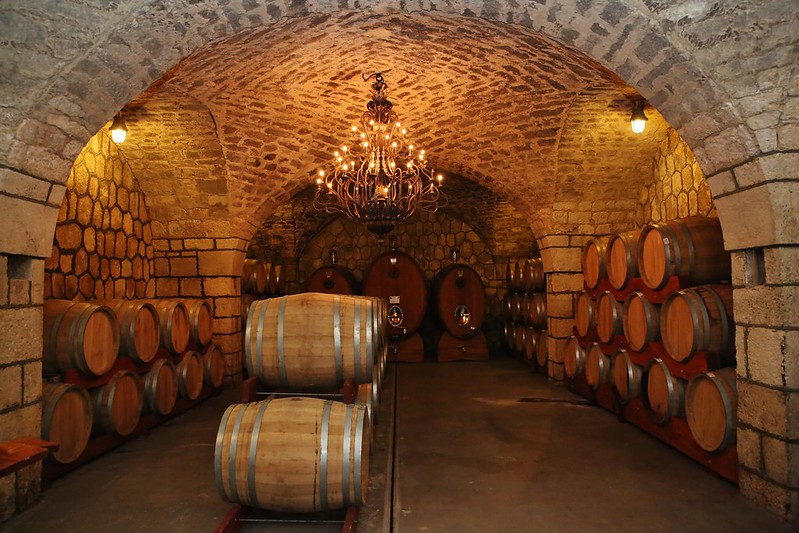
A breathtaking landscape awaits and welcomes visitors to the Brothers Grosjean Winery, located on the border of the municipalities of Quart and Saint Christophe, in the Aosta Valley. Here are cultivated vineyards of Tzeriat, Rovettaz, Creton, and Touren in Quart and Merletta, Castello Passerin d’Entreves, and Senin in Saint Christophe. The peculiarity of these crops is that they are entirely organic since insecticides and chemicals are not used here. The visit to the cellar is undoubtedly a sensory experience, which is completed in the tasting, but it’s mainly empathic. It is usually led by Vincent Grosjean, one of the five brothers who run the company, who can fully involve you in the family philosophy: tradition, respect for nature, cultivation of native vines, and adoption of cultural techniques attentive to the territory.
17. Cantine Ferrari, Trentino-Alto Adige
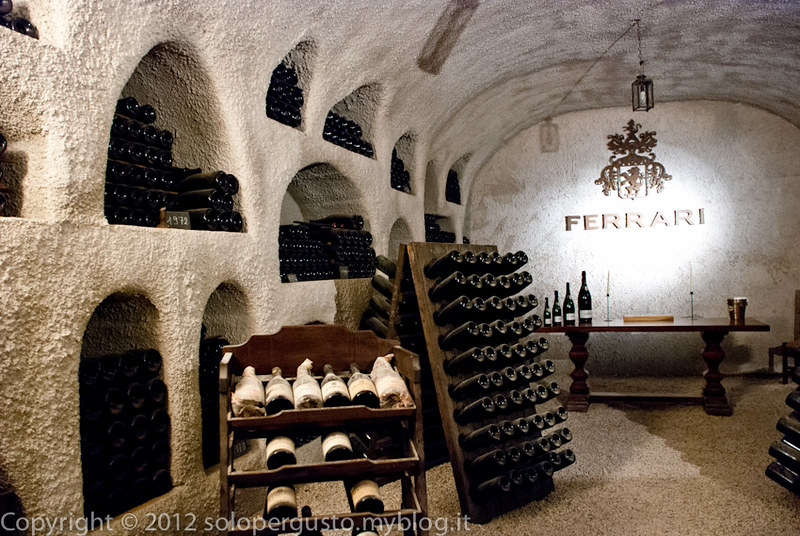
The visit to the Ferrari Wineries is described by each participant as a unique and suggestive experience. It’s possible to take the guided tour all year round from Monday to Saturday and, in December, also on Sundays. It all begins with a short introductory film, which tells the story of the cellars and the family, which has now led the company for three generations.
During the around an hour-long visit, you are accompanied into the depths of the cellars, where you can admire an almost infinite quantity of bottles of wine and sparkling wine. The tour ends with a toast to Ferrari Incontri, a structure designed to welcome guests, where you can also buy some products.
16. ColleMassari, Tuscany
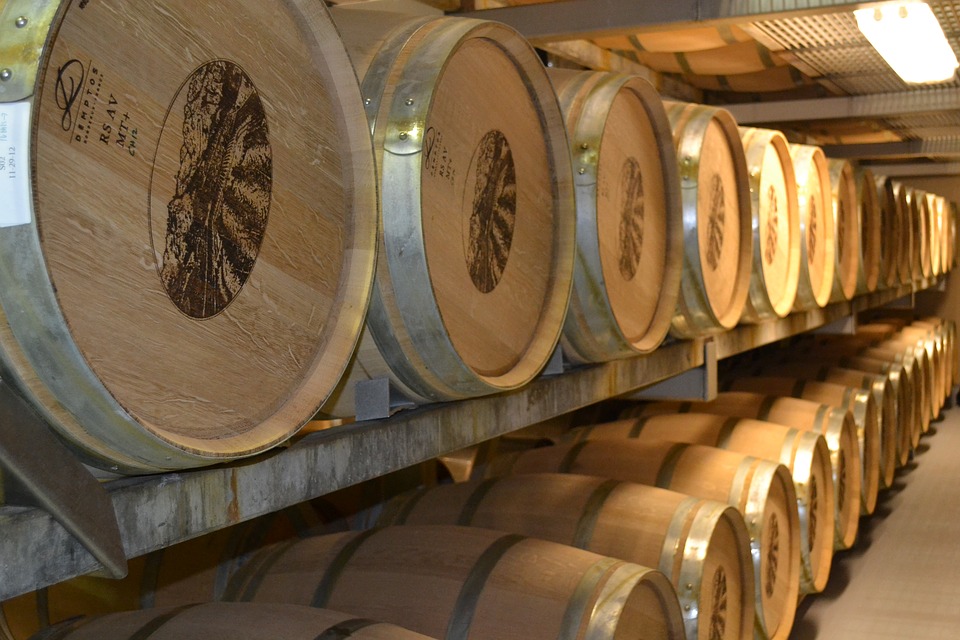
The cellar occupies an area of 3,648 square meters and produces about 800,000 bottles per year. It was designed by architect Edoardo Milesi, who wanted to create a workplace where nothing went to waste. The conformation of the structure, actually, allows conserving all the water. Even that of the underground drainage of the barrel cellar, which helps to maintain the right humidity, is entirely recovered and used several times until it’s collected in a phytodepuration plant that reinserts it in a basin at the edge of a stream. The air conditioning also uses natural energies, as it’s the same masonry and walls with ventilated roofs that ensure great thermal inertia.
15. Tenuta Santavenere, Tuscany
The company is located in the Montepulciano area, in the province of Siena, and is owned by the Triacca family. Designed by architect Alessandro Piccardi, it includes modern technologies that help carry out the entire production process while maintaining an architecture that blends well with the rural landscape. The building that houses the cellar has a singular decagonal shape and is dedicated to winemaking, which takes place using a vertical production process.
14. Rocca di Frassinello, Tuscany
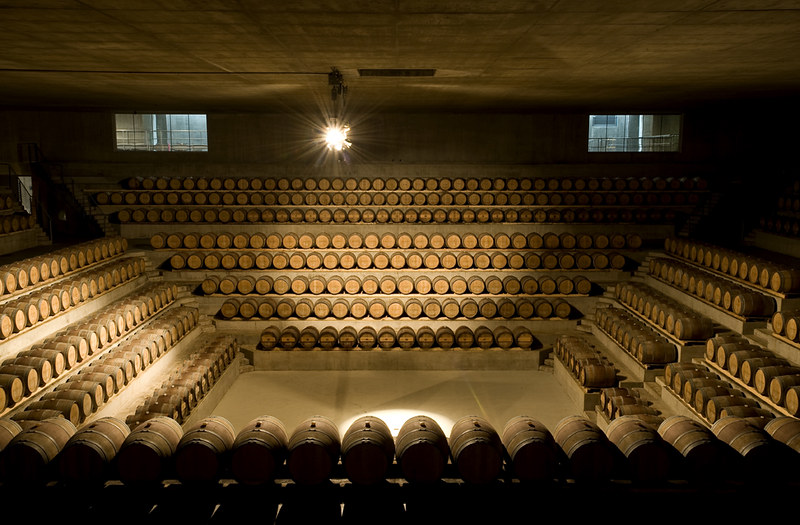
It is an elegant and essential cellar for the realization of which even the great architect Renzo Piano bothered. The essentiality of the forms enhances the functionality of the establishment, such as to guarantee the highest quality of the wines. The peculiarity of the cellar is the revolution imposed by Piano in the layout of the spaces. In the center and underground, he placed the barrel cellar, in order to keep humidity and temperature naturally stable. It is a large square space measuring 70 by 70 meters, surmounted by an immense attic that stands without the support of any column. All the other functions of the production cycle are positioned around it.
13. Cantina di Fonterutoli, Tuscany
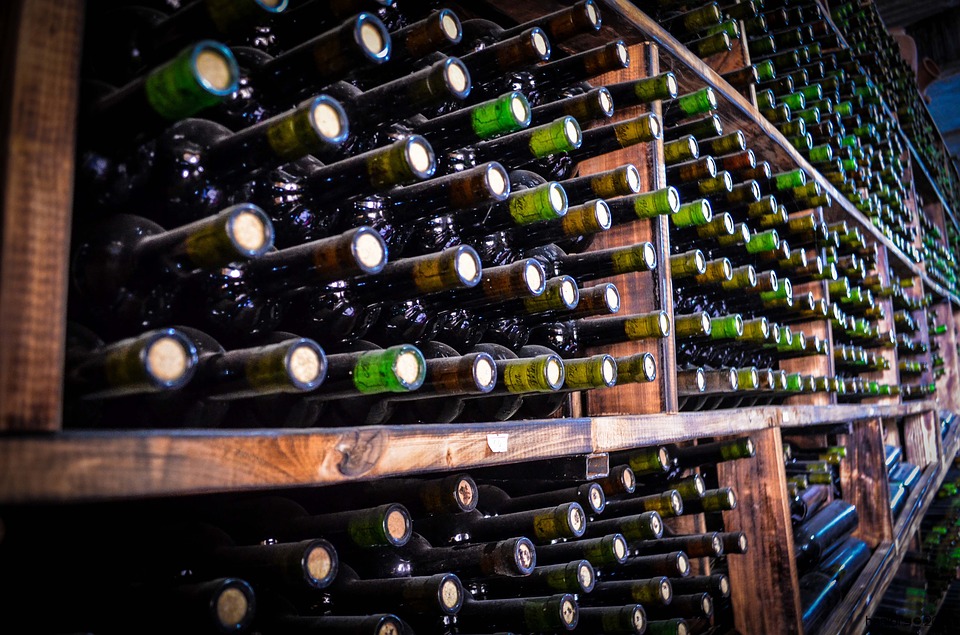
The Fonterutoli Winery is built in a contemporary style, both, in the functions and the spaces. It is the work of the architect Agnese Mazzei who accepted the challenge of a very complex design. In fact, the cellar is 75% underground, with an area of 10,000 square meters, with the processing of the grapes by natural fall. The winery suddenly appears to visitors, without breaking the harmonious balance that is created between nature, territory, and the ancient village. The itinerary of the visit develops in crescendo until it ends on the lowest floor where the barrel cellar, at a depth of 15 meters, offers the sensation of being in an almost sacred and inviolable place.
12. Tenute Pieve Vecchia, Tuscany
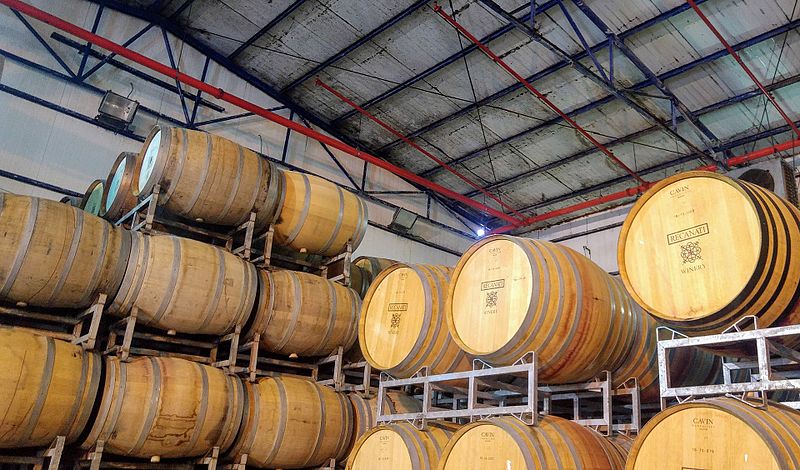
This Old Parish Church Estate winery has a modern, sober, and refined design, aimed at supporting production activities. Your visit may not only have the purpose of tasting the delicious wines that are produced here, but you could make a thorough inspection if you are about to get married. Here, in fact, it’s possible to schedule the reception: your guests will be welcomed in a structure immersed in an ancient archaeological site dating back to Roman times. There are three large spaces that you can use for the various moments of the reception, with behind a fairytale scenario that includes the garden with ancient olive trees near the Roman cistern, another large garden in front of the stone villa, and the splendid swimming pool with a view that extends into the valley.
11. Tenuta Argentiera, Tuscany
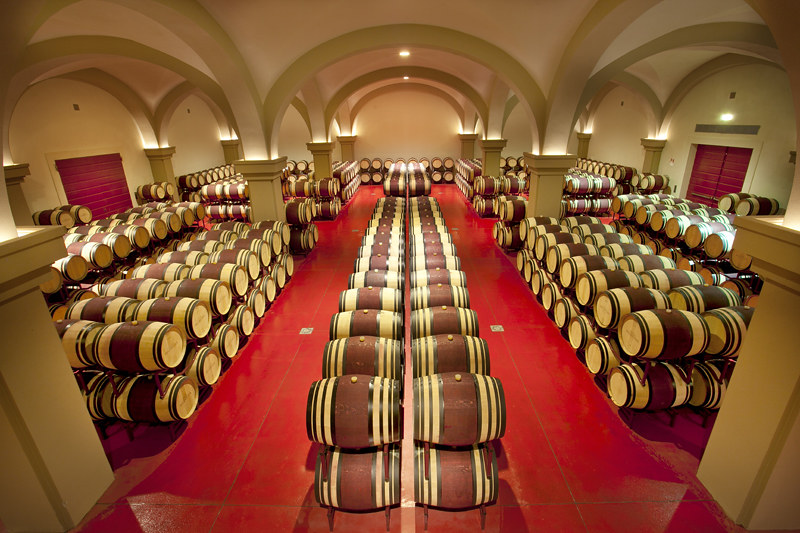
The design of this winery was inspired by the architectural style of the place, hence, the Tuscan coast that extends between Livorno and Grosseto. The building is made up of thick sloping walls that help create a naturally thermoregulated internal environment. Tradition here goes hand in hand with modernity and efficiency: the temperature is kept constant thanks to a computerized system that manages hot and cold water flows. In the aging cellars, you can admire around 1,200 French oak barriques. In order to fully enhance the territory and the typical products, guided tours and tastings are organized at Argentiera Estate upon reservation. In approximately two hours of the visit, you can see the vineyards located on the hills and the new wine cellar. The tasting includes three wines produced by the company as well as some local culinary products.
10. Feudi San Gregorio, Campania
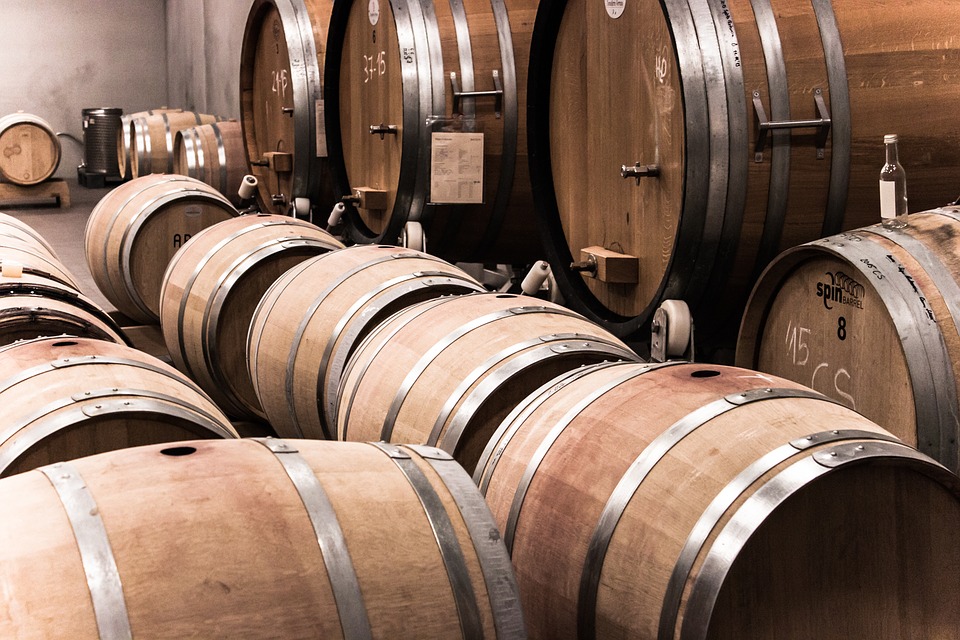
The young Japanese architect Hikaru Mori led the renovation project of the Feudi San Gregorio winery, which took place in 2002. The structure was given a modern and uniform design, with a lot of technology present mostly in the production processes. The cellar has a steel roof, walls in glass, zinc, concrete, and stone as these elements create a unique space that tells the company’s story and success to the visitors. Guests will appreciate a gallery of about 130 meters where there are over 5,000 barrels and barriques. The winery has been exhibited twice as architectural excellence at the Venice Biennale.
9. Allegrini – Villa della Torre, Veneto
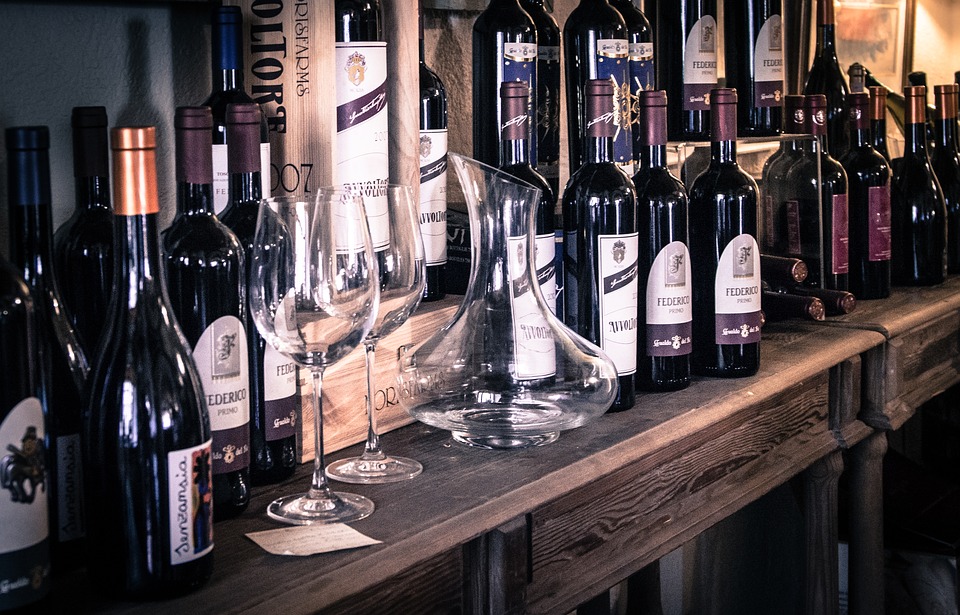
The Allegrini family boasts a long-standing tradition in the history of Valpolicella viticulture. The Villa that houses the cellar dates back to 1560 and was built at the behest of Giulio della Torre, an intellectual and famous humanist of the time who has also contributed to the definition of the project.
Why does this building take part in this ranking? Because its conception reveals its originality: it’s, both, a country house, hence closely linked to industriousness and agricultural activities as well as a place destined for peace of mind. You can plan the visit by reservation, choosing from 4 types that include the tour of the winery, the tasting of 4 wines, any snacks, light lunches, or dinner. The location is also suitable for the organization of weddings and religious celebrations (the Temple of the Villa is still consecrated), private banquets, business meetings, and other events.
8. Le Mortelle, Tuscany
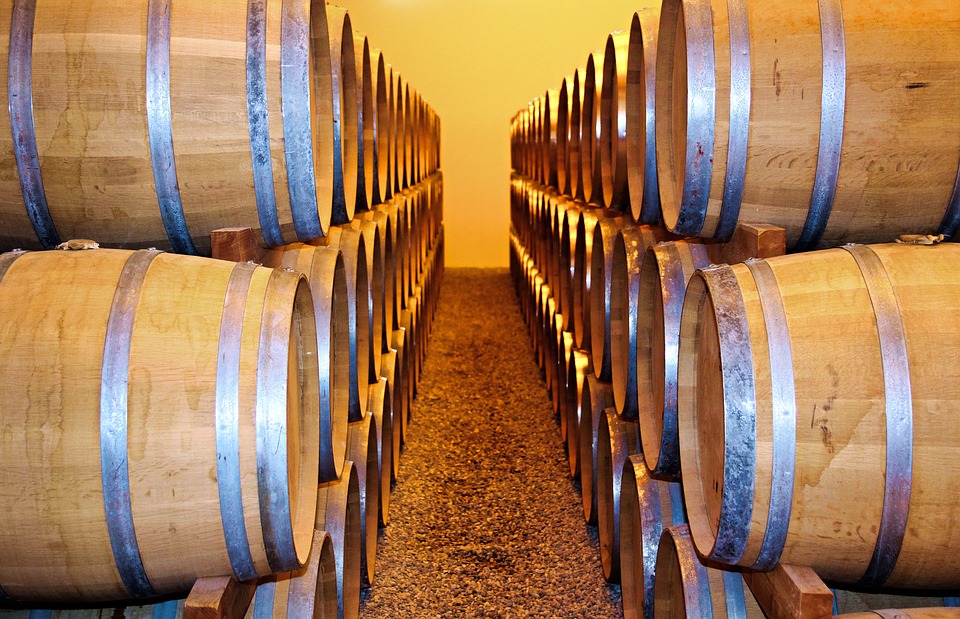
The name of this winery derives from that of the wild myrtle, which characterizes the local flora. The building was part of an old farm owned by the Habsburg-Lorraine, centered on cattle breeding. The Antinori family bought the property in 1999, transforming the approximately 160 hectares of land into wine growing and over 15 hectares into organic orchards.
Those who visit the winery must reach the top of a slight hill from which the whole estate can be seen. The building was built entirely using natural materials, has a cylindrical hypogeum shape, and includes three levels each dedicated to the various phases of the wine production cycle. The visit is by appointment but there is also the workshop of the Fattoria Le Mortelle (eng. Le Mortelle Farm), which is open all week. There, you can find the wines and products of the estate.
7. Donnafugata, Sicilia
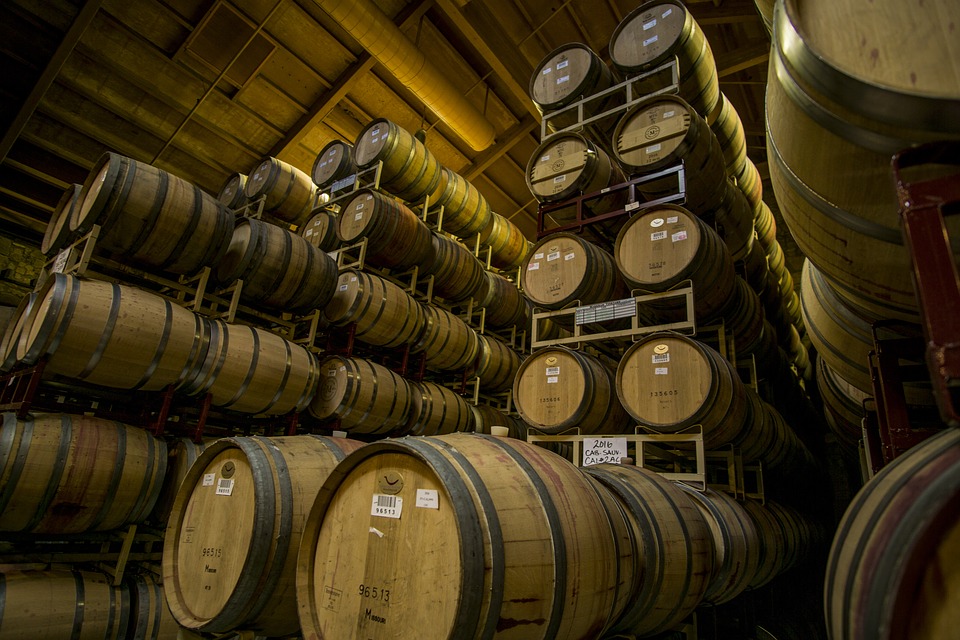
It’s one of the most renowned wineries in Italy. The original buildings date back to 1851 and still retain the typical layout of the Mediterranean “baglio”, with a large internal courtyard that houses fragrant citrus and olive trees. Local shipwrights have made the wooden trusses that overlook the gardens, more recently (in 2007 to be more precise) the underground barrel cellar was excavated entirely in the tuff rock.
A visit to the Donnafugata winery is a memorable experience: throughout the year, visitors can choose to explore, taste, and pair the wines with Sicilian cuisine in Marsala (all year round), in Pantelleria (from 14 June to 23 September), and in Contessa Entellina (August 10 for Calici di Stelle).
6. Tenuta dell’Ammiraglia, Tuscany
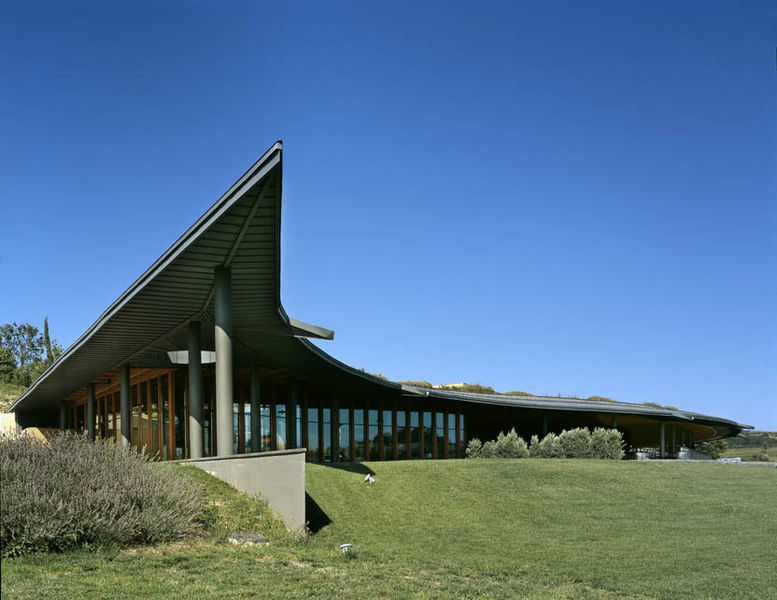
The project was curated by the architect Piero Sartogo who also took care of the construction of the Italian Embassy in Washington, and the winery was inaugurated in 2011. The design is modern and efficient, completely at the service of the environment. The cellar seems to have been literally inserted into a hill, the natural curves of which have been followed. The temperature inside is constantly maintained at around 18°C. On the website of the Frescobaldi properties, there is a convenient form to book a visit to the winery directly online.
5. Cusumano, Sicily
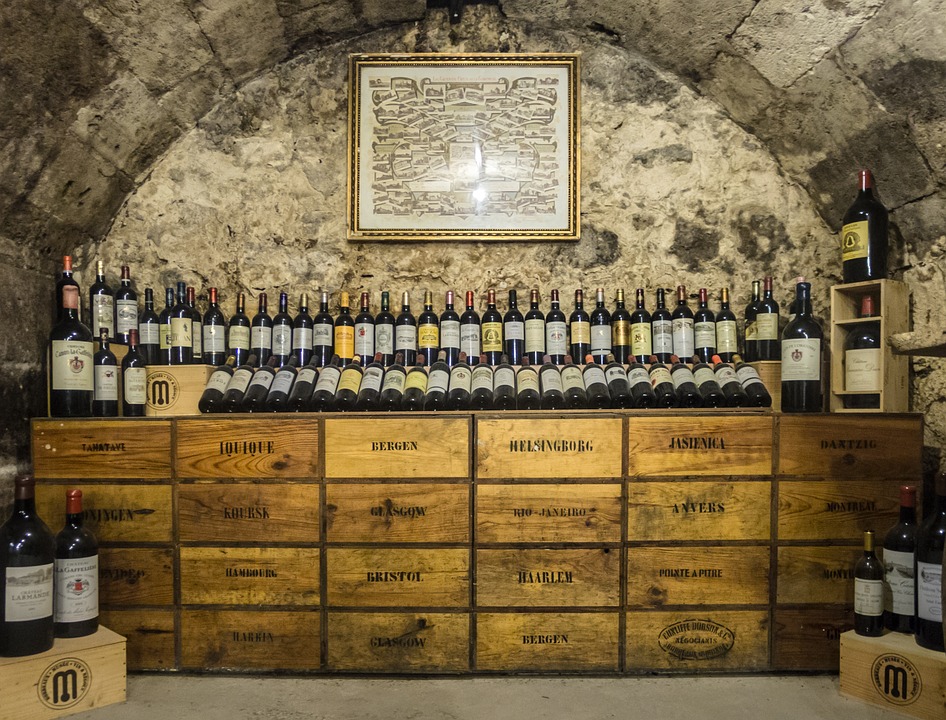
Tradition and innovation, past and future, man and nature: the project of the Partinico winery of the Cusumano company can be summed up with these contrasts. They represent the peculiarities of the Sicilian land, its dynamism, which is also expressed in wine production. The structure of the cellar covers an area of about 4000 square meters and another 3000 square meters underground. It stands on the area of an ancient beam and is the work of the architect Fabrizio Ruffino. The design and contemporary style are applied to very widespread production reality in the area. A visit to the facility includes a tour of the production center and the aging cellar, ending at a place dedicated to meetings and events aimed at preserving and transmitting the wine culture.
4. Kellerei Cantina Tramin, Trentino-Alto Adige
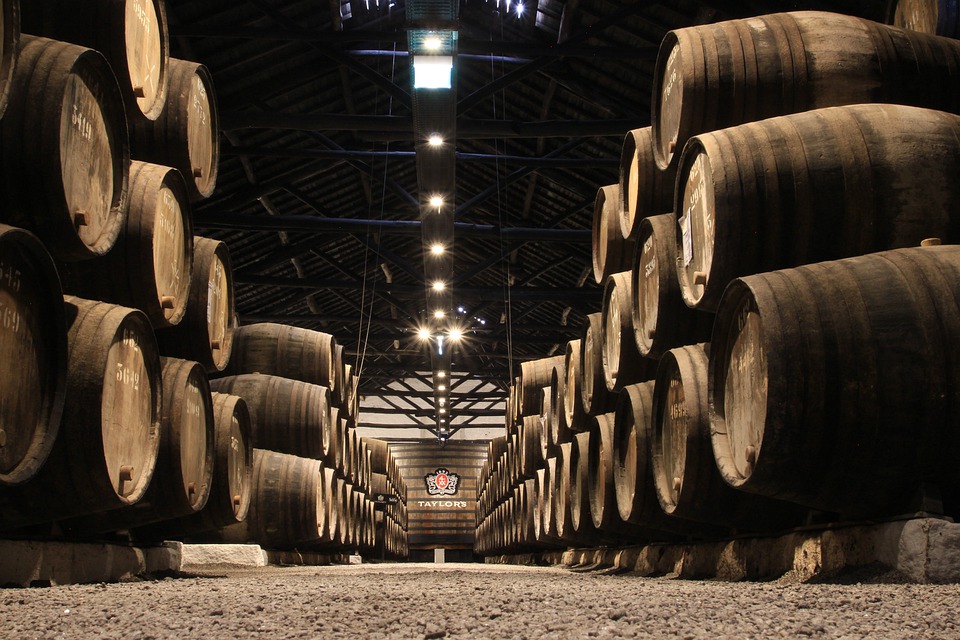
Tramin winery boasts a long history: it was founded by the priest Christian Schrott in 1989 and, to date, has 290 members who cultivate an area of about 245 hectares of land. The new headquarters was inaugurated in 2010 and is the work of the architect Werner Tscholl who has been able to perfectly blend past and future, using materials such as wood, iron, glass, and concrete, creating plays of light between transparency and darkness. The project has received numerous awards and it was built starting from the original body of the cellar. The result is a structure that stands out harmoniously on the surrounding landscape, at the same time drawing a sharp contrast with the environment. Each space is expertly designed to offer different functional areas both to operators and visitors. Two long green arms then depart from the main structure that house the wine shop and the tasting room.
3. Ceretto Wineries, Piedmont
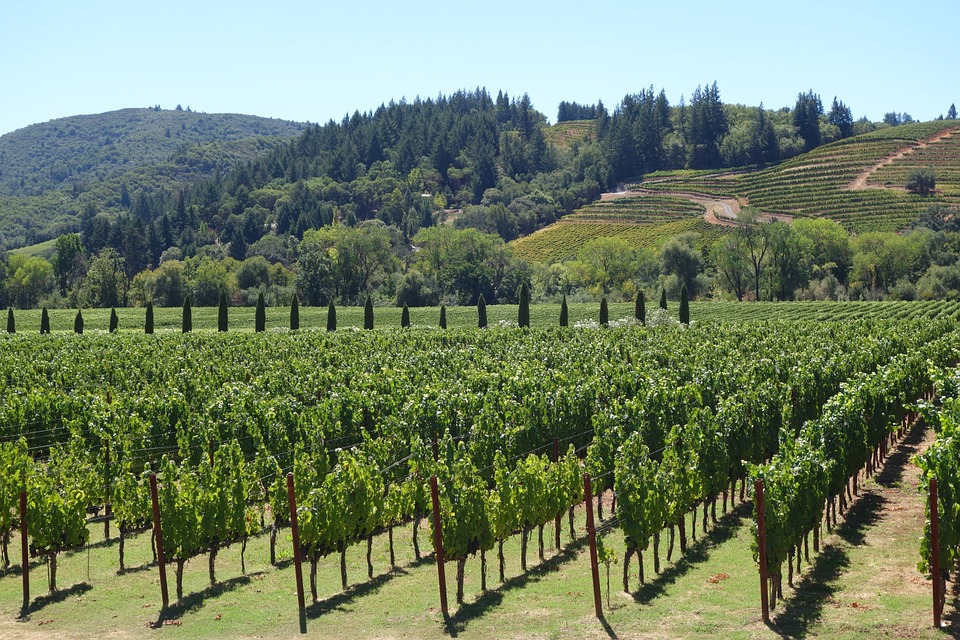
The naturally spectacular scenery of the cultivated land competes with the architecture and design of the buildings that make up the cellar rooms. The Ceretto family, which has been producing wine here for three generations, commissioned the Turin architects Luca and Marina Deabate to build a real monument to Barolo wine, a glass cube that detaches but at the same time blends perfectly with the landscape. Likewise, the Ceretto family invited artists David Tremlett and Sol LeWitt to renovate an old deconsecrated chapel, the Brunate Chapel, which was located in one of their vineyards. The chapel, built in 1914 by local farmers, had fallen into disrepair. LeWitt and Tremlett have transformed it into a bold, luminous triumph of colors where greens and reds, blues and yellows celebrate the vitality of the Piedmont countryside.
The visitors of the Ceretto estate can appreciate both these real works of art and taste the wines produced there in two types of guided tours, centered around the main Monsordo winery, near Alba. The first, called Wine and Art, includes a visit to the Brunate Chapel, as well as a tour of the winery and a tasting. The second, called Barolo e Architettura, takes visitors to the Bricco Rocche winery and its glass cube, as well as the Monsordo winery, and includes a tasting.
2. Castelbuono Estate, Umbria
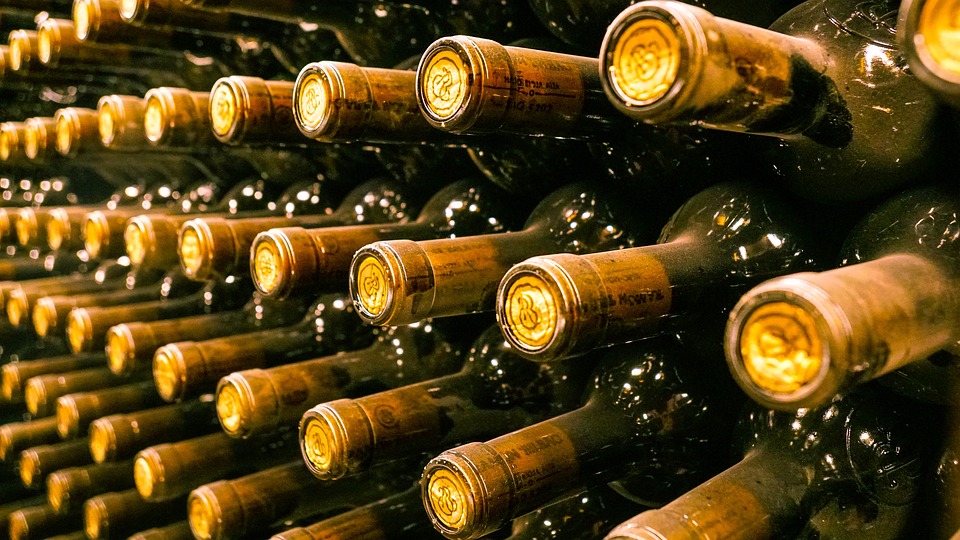
The Lunelli family has owned this estate, located between the municipalities of Montefalco and Bevagna, since 2001. The profile of the cellar is unmistakable, given the characteristic “carapace” shape that resembles a turtle. It was the master Arnaldo Pomodoro who studied the project as a long-time friend of the family.
This structure, which touches the disciplines of architecture and sculpture, looks like a large dome covered with copper on which you can see cracks that symbolize the furrows of the earth. A visit to the “Carapace” represents, both, an exploration of a Pomodoro sculpture, where one lives and works, and a journey into art and wine.
1 . Cantina Petra, Tuscany
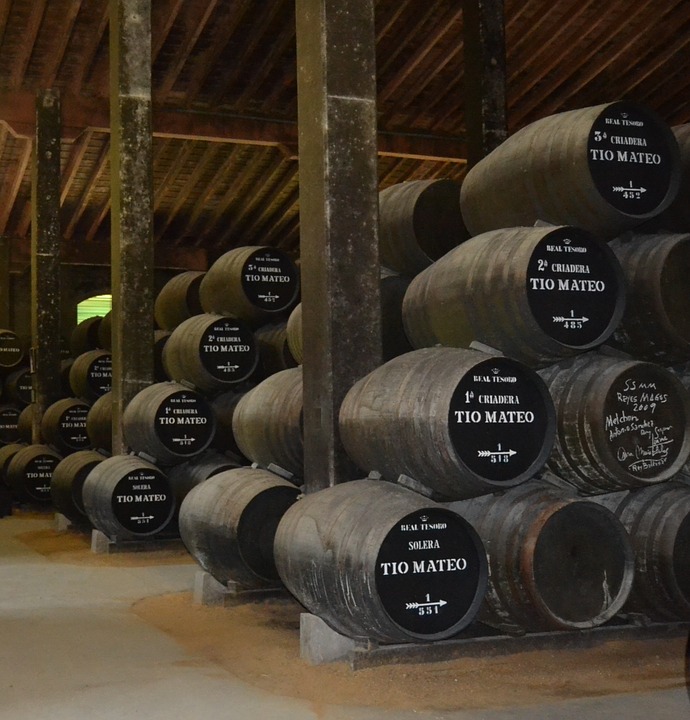
In the first place, we find Petra’s Winery which is located in the hinterland of Piombino. Mario Botta is the architect who was responsible for designing this “place of ancient stones”. Dug into the face of the hill, almost merging with the rest of the landscape, it becomes a natural element. The building has the shape of a large cylinder covered in Prun stone and allows natural light to penetrate all environments.
A large staircase leads the visitor to a balcony from which you can enjoy a splendid view of the Tyrrhenian Sea and its islands. Taking advantage of a long tunnel dug into the hill, you reach the end of the route, which crosses several points: the modern pressing area, the steel room, and two spectacular barriques (where the wine is left to rest).
Check out these amazing hotel deals!
- Save up to 30% on your hotel in Hawaii!
- Last-minute holiday hotel deals
- Top hotel deals for a new year trip
- Visiting Paris? Find the Best Deals & Reviews at TripAdvisor.
- Save 30% on hotels in Ocean City, Maryland...a TripAdvisor Top 10 Summer Destination!
- Save up to 30% on your hotel on your Winter Vacation!
- Find top-rated hotels at the lowest prices on TripAdvisor. Check rates now!
- Save up to 30% on hotels for a romantic getaway!!
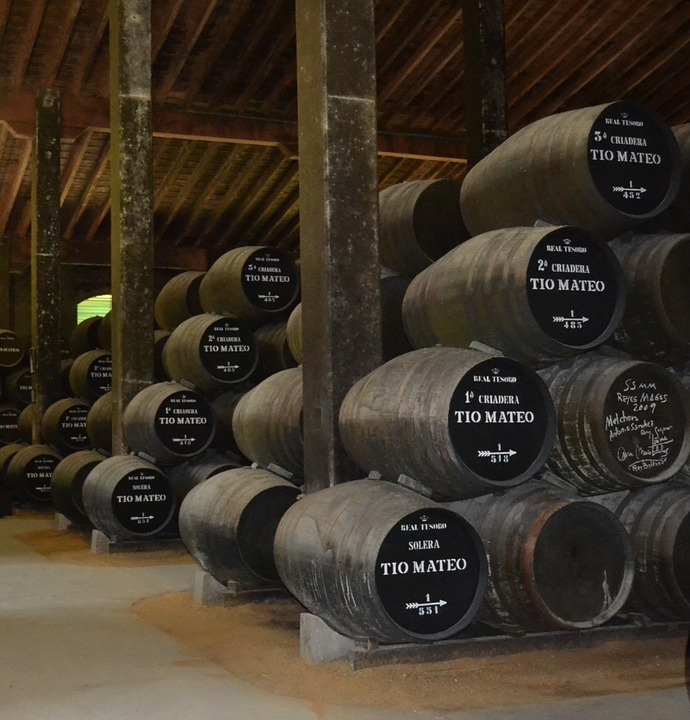
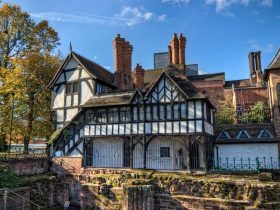
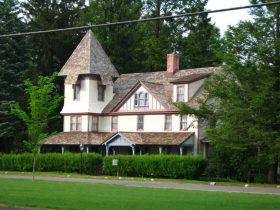

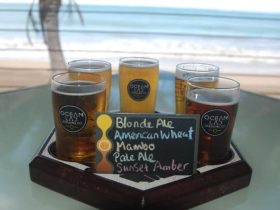
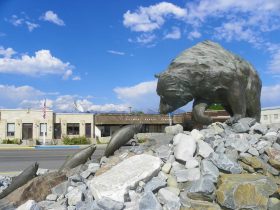
Find Us on Socials